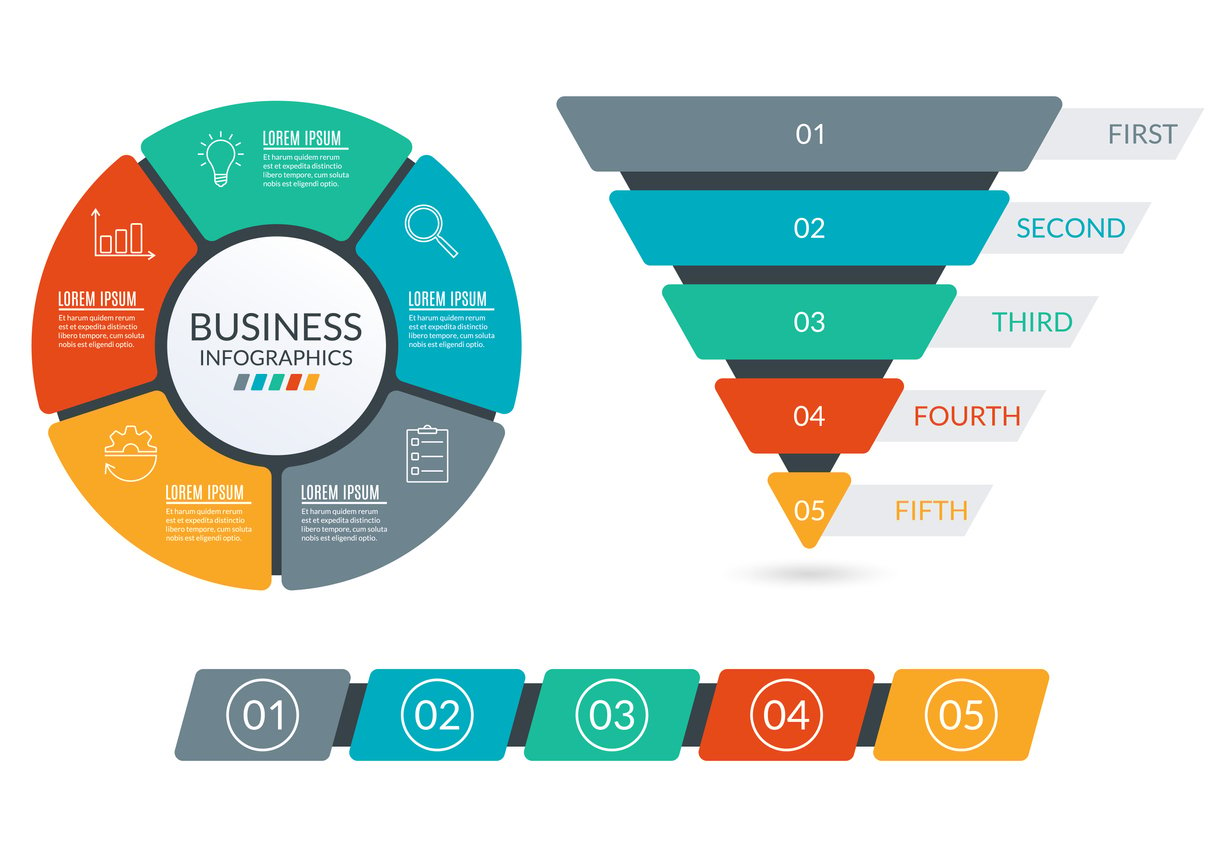
How to Ask the Right Probing Questions for Sales Professionals
 Updated on
Updated on
 By Carlos Correa
By Carlos Correa
Carlos Correa
Carlos has been involved in the sales space for well over ten years. He began in the insurance space as an individual sales agent, managing teams as s...
learn more
Carlos Correa
Carlos has been involved in the sales space for well over ten years. He began in the insurance space as an individual sales agent, managing teams as s...
Table of Contents
Table of Contents
Imagine this – a hard-boiled detective solving a grand jewel heist.
He has a chance to talk with the jewelry shop owner and asks, "What keeps you up at night?"
If it doesn't work for Sherlock, it won't work for you.
Asking awkward questions like this one isn't just a bad sales cliche; it also fails to reveal crucial information about the prospect, their company, and most importantly, their problem.
So what's the alternative?
Asking probing questions that help you dig deeper into a prospect's problem, provide real value, and build a lasting business relationship.
Let's dive into this Sir Arthur Conan Doyle-approved method and explore:
- Probing questions in sales
- The three different types of sales probing questions
- The 10 most common probing questions used in calls
- A few tips on how to get started
Step into our office.
What Are Probing Questions in Sales

Probing questions ask for more detail than standard questions. Examples include "Can you tell me more about that?", "Explain that to me." or "What do you mean by that?". They help a conversation move forward in a meaningful, productive way and are often used to get to the heart of a problem or to clarify a statement.
Importance of Probing Questions for Sales Professionals
It doesn't take much detective work to see the importance of probing questions in sales – after all, "getting to the heart of a problem" is exactly what salespeople need to do. You need to know the prospect's pain point in order to solve it, and the prospect needs to know how you'd solve it before they sign up.
Probing sales questions are a sales rep's top tactic to uncover crucial information they don't yet possess. 42% of sales reps don't have enough information before they enter a sales call. This means they need to find out crucial information during the call.
And probing questions aim to dig out that information.
Probing questions are an important part of adaptive selling, in which a salesperson adjusts their angle and technique depending on the information they have, the situation they're in, and the prospect they're pitching to.
It's basically theater improv – so probing questions can help when you're acting on your toes.
But on the flip side, you can also weave these questions into your cold call script. This ensures that crucial probing sales questions are never left behind (plus, even your new reps can start reaping the benefits, even if they aren't ready to deviate from a script).
Whatever method you prefer, probing questions are the breadcrumb trail that leads you to a closed sale.
The 3 Types of Sales Probing Questions
The 3 main types of probing questions in sales include value selling probing questions, open-ended probing questions, and close-ended probing questions. They all provide their own value to a sales call, and they're usually used in combination.
First, let's look at a quick summary of these questions and what they entail:
|
Type |
Description |
|
Value selling questions |
Questions that dig into the value the prospect needs |
|
Open-ended questions |
Broad questions that get the prospect talking |
|
Close-ended questions |
Specific questions with a targeted goal |
Now, let's go in-depth.
1. Value selling probing questions
Value selling probing questions are used to uncover the individual need the prospect has to personalize and target a pitch specifically.
These questions are about digging deep into a customer's needs so you can provide them with the value they need – not just sticking to your own plan.
In order to properly qualify a prospect, you've got to discover their needs and goals, and at least 50% of prospects aren't a good fit.
Value selling questions require a salesperson to:
- Adopt a quality-driven approach
- Approach a sale with a high degree of empathy for the prospect
To pull this technique off perfectly, try to phrase your questions to get long, detailed answers, as those are most likely to reveal the prospect's key details.
Not to mention that long answers lead to more closed deals, according to data from Gong.

Here are examples of probing questions that would elicit a longer answer:
- "Can you help me understand what's holding you back from that goal?"
- "Can you walk me through a typical day in that role?"
- "Can you tell me about that problem? What does it impact?"
Questions like this draw out a longer, more detailed answer that contains far more information than a simple yes/no question. You can get more thoughtful responses by putting more thought into your questions.
Focusing your efforts on discovering the prospect's goals and providing them with real value closes more deals and helps with building business relationships.
2. Open-ended probing questions
Open-ended questions don't require specific answers, so they present a great opportunity for the prospect to describe their problem, their company, and just generally anything they really need to say.
And if they need to say it, then you need to hear it.
Open-ended questions are also important because they open up opportunities to use your own expertise to reveal problems the prospect didn't even know they had.
This is called expert judgment, and it puts you in the driver's seat when it comes to uncovering pain points.
Let's use an example of open-ended questions leading to expert judgment:
Salesperson: "What improvements are you looking to make in your department?"
Prospect: "We have quite a few new hires that are having trouble navigating our old system."
Salesperson: "It sounds like you're having issues with the interface and ease of use."
It allows you to showcase your knowledge and skill (which, in turn, builds trust and subject authority), all the while solving the prospect's problem and catering to their needs.
Win-win.
Open-ended questions are useful for nearly every crucial point in a sales call, including building rapport, qualifying, and even that most dreaded part in any sales call – objection handling.
For example, the all-too-common objection "I can't afford this right now." can be countered with "What budget do you have allocated to spend on this type of project?".
It's non-combative (almost friendly, even) and drives the prospect to give you a valuable, in-depth answer.
3. Close-ended probing questions
Close-ended questions are the opposite of open-ended questions (well, duh) in that they ask for a specific answer.
Now, now – we know we said that probing questions ask for long, detailed answers, so "close-ended questions" probably throw up some red flags for you.
But you just have to ask the right close-ended questions. Ones that don't elicit an immediate yes/no answer.
The right close-ended questions are generally used for gathering quantifiable information (like metrics) that helps you discover the value your solution can provide.
Okay, this sounds like a lot of mumbo jumbos, so here's an example for context:
- "Is this a problem affecting multiple departments? What's the impact?"
- "How often does this issue come up?"
This is zeroing in on a specific answer, but still not as limited as a normal yes/no question. These questions help you discover solid goals-related metrics that are key to providing the prospect with real value and closing a deal.
These metrics can include things like "boost sales by 20%" or "increase lead generation by 50%". They're quantifiable goals that you can focus your solution on.
Using quantifiable metrics to qualify leads and close more deals is the "M" part of the MEDDIC sales methodology. :)
How to Ask Probing Questions

Now that you've got the script, let's give you some solid tips for asking probing questions.
Sure, there are plenty of sample questions out there, but it sure helps to practice and adapt certain techniques to help your overall flow and fluency. You don't want to sound like you're reading off a teleprompter, right?
After all, the ability to go off-script and ask intuitive questions is one of the biggest challenges of an outbound sales call center.
Here's a quick read of our top methods:
|
Method |
Description |
|
Practice active listening |
Actively engage with the customer's needs, and really listen to their story |
|
Try The 5 Whys |
Ask "why" until you reach the root of the problem |
|
Don't make assumptions |
Check your biases and, even if they have similar problems, treat each customer like an individual |
|
The Funnel Technique |
Drill down into the nitty gritty by asking progressively narrower questions |
Okay, now here are the details:
Practice active listening
Active listening is when you make a concentrated effort to not only hear the words someone says but also to empathize with the meaning and feeling behind them.
Many of us are so wrapped up in what we plan to say – our pitch, our script – that we forget to slow down and absorb the meaning of what the prospect is saying.
The process of active listening generally involves four steps:
- Listen to the prospect
- Repeat their words back to them
- Ask the prospect to confirm you understand them
- Ask a relevant follow-up question for deeper understanding and clarification
Active listening is an excellent opportunity to use probing sales questions and an easy way to work them into your discussion when you're new to it. It's nearly a prompt, like an actor getting a cue to say their line.
Truly, genuinely listening to your prospect is the number 1 way to start asking probing questions like a pro. In fact, the highest-performing salespeople actually listen more than they talk.
Try The 5 Whys

We've heard some sales professionals say, "never ask a prospect why" – don't worry, this "why" is different.
This isn't a plain, flat "why" that sounds like an interrogation; it's a tactic used by many salespeople to delve deep into an issue.
The 5 Whys is a problem-solving technique created by Sakichi Toyoda, founder of Toyota Industries Co., Ltd. It's a method designed to reach the root of a problem by asking "why" until you reach the core issue, and once you know that core issue, it's easier to solve.
You guessed it: it usually takes about 5 Whys to get to the core issue (but not always – you could find your way there with just three or four).
Here's an example of this in action:
Prospect: "We're totally disorganized – it feels like we're all over the place."
Salesperson: "Why do you think that is?"
Prospect: "We just got done with a huge hiring initiative, so we're experiencing new hires, exhausted recruiters, and overworked managers."
Salesperson: "Why do you think your employees are overwhelmed?"
Prospect: "There's just too much to do. Inputting information, onboarding, and training is too much."
Salesperson: "Why is it too much?"
Prospect: "It's a mess. It just feels like we don't have enough people to juggle all these tasks."
Salesperson: "It sounds like it's an automation issue."
And here, we reach a solid, tangible issue that you can solve.
The 5 Whys is a technique built around active listening and deep questioning, so working it into your calls is a perfect way to start honing your probing questions skills.
Don't make assumptions
Yes, it's true – the simple act of checking your biases and not making assumptions can improve the way you ask probing sales questions.
What do we mean by that?
Well, sometimes, our thought process can be clouded by similar customers and circumstances. Maybe your last customer had issues with generating organic leads just like your new one, so you unconsciously apply their challenges to this new prospect.
Each prospect is unique, so it's important to be patient and try to be mindful of your biases.
The Funnel Technique
The Funnel Technique is useful when asking probing questions. It's the practice of always prefacing a close-ended question with an open one. It helps you drill down into the nitty-gritty details.
Here's an example of it in action:
- Open-ended question: "What are the main issues you're having?"
- Close-ended question follow-up: "Do you know what your KPIs look like?"
This sequence narrows down the topic – like a funnel (hence the name).
This not only helps you but also brings the customer along for the journey. Slowly getting to the details with gradually deeper questions stops them from getting lost in "sales-y" questions.
Probing Questions for Identifying Customer Pain Points

There are hundreds of different probing sales questions out there – some vary by product, and some vary by personal preference or business relationship.
We're going to stick to showing you the most common probing questions examples, and you can pick out the ones most relevant to your business and grow your own method.
Let's dive right in.
1. "Can you tell me more about the present situation?"
A nice, open-ended question you can always ask early on.
This question helps you begin to understand the issues the prospect is facing in their own words and opens up a great opportunity to use your expert judgment.
After all, using a broad term like "present situation" may lead to them discussing a pain point that they don't know how to describe in their own words.
2. "What goals and objectives do you hope to achieve?"
This question enables you to better understand the prospect's pain but may also reveal some key metrics.
The great thing about this question is that even if it doesn't lead to a quantifiable metric, you can easily segue into a follow-up question to discover that metric.
If the prospect answers this question with "A significant increase in lead generation." your follow-up can be "What do you see as a significant increase?".
3. "Why have you been dealing with this issue for so long?"
This question opens up many concerns a prospect has about a solution. This opens the door to possible objections:
- "The solution is too expensive."
- "The solution is too complex."
- "The solution takes too much time and effort to implement."
But don't worry – objections are a good thing. You need to know a prospect's objections if you want to mitigate them properly.
This question is also framed in a way to get the prospect talking – and getting longer responses is a good thing, remember? ;)
4. "What would happen if you didn't solve this problem in [one month/one year]?"
The head honcho of all probing questions – this whopper is a two-in-one deal. How?
- It tells you the prospect's main pain point
- It alerts the prospect themself to the impact
That's right, many prospects may not even comprehend the impact of their issue themselves until you bring it up.
And that epiphany leads them one step closer to a decision.
5. "What would happen if you solved this problem today?"
The opposite of the last question – ask the prospect to imagine the value in solving the problem at this very moment and the benefits they would reap.
Would they save money? Would they retain more employees?
Whatever information they give you is a driving factor in their decision-making process, so definitely keep it in your back pocket.
6. "Does this problem affect other parts of the company?"
How far-reaching is this issue? Does it affect sales and marketing?
Maybe it affects the whole company.
Agitating this can be a critical point in your discussion. Try something like: "If X part of the company were having issues, how would that trickle down to Y and Z parts?"
Dissecting this question can help the prospect realize the greater ripple effect that a certain problem may cause, even if they didn't recognize it before.
7. "What options are you currently looking at?"
Knowing your competition is essential. This question helps you learn who you're up against so you know what features to highlight.
For example, the competitor could be much more expensive. You can then emphasize the affordability of your solution and its potential ROI (but don't diss the competition – highlight your strengths, not their weaknesses).
8. "How is this problem affecting your costs?"
What better way to agitate an issue than bringing money into the situation?
This is also a great way to lead into a discussion on ROI. Alleviating these cost issues with your solution is a direct return on investment.
9. "How much is this issue costing you in terms of time/effort/resources?"
This question is very similar to the last but addresses the opportunity cost rather than the monetary one.
This is a great question to raise whenever you're discussing ROI, too, as lost time, effort, and resources are essentially lost money.
10. "Who is ultimately responsible for this project?"
This question gives you clarity and visibility into the project – but also is a nice way of establishing where your contact sits in the company.
Understanding your prospect's position and influence helps you determine if they're a decision-maker, how much they know, and if you need to start asking to speak to more contacts.
Probing Questions to Understand Your Prospect's Barriers to Success
Effective salespeople don't just listen to what prospects say; they go deeper to understand the underlying challenges hindering their success. This is where the following probing questions come in.
1. "How would you rank the importance of addressing this issue?"
This question goes beyond a simple "yes" or "no" about a problem and forces the prospect to quantify its significance. Their answer reveals the urgency and potential impact of finding a solution.
2. "What is the potential increase in productivity if this issue were resolved?"
This question shifts the focus from the problem itself to the desired outcome. By prompting the prospect to consider the positive impact of a solution, you understand the value they place on resolving the issue.
3. "As your competitor, what action would you take at this moment?"
This question puts the prospect in a strategic mindset. Their answer might reveal insights into industry best practices or potential weaknesses in their current approach.
4. "If you were to create an ideal solution, what features would it include, and what budget would you allocate?"
This open-ended question allows the prospect to envision their perfect solution. It unveils their desired functionalities, budget constraints, and prioritization within the solution.
5. "Which three main results do you aim to achieve by resolving this issue?"
This question clarifies the specific goals the prospect hopes to achieve. Understanding these goals allows you to tailor your pitch to demonstrate how your solution directly contributes to their desired outcomes.
6. "What are the three essential features that the solution must include?"
Similar to the previous question, this one focuses on the functionalities that are non-negotiable for the prospect. This helps ensure your solution aligns with their core requirements.
7. "What solutions or methods are you currently employing?"
Understanding the prospect's existing attempts to address the issue reveals their current strategies and potential areas for improvement. It also helps you position your solution as a complementary or superior alternative.
8. "On a scale of 1 to 10, how critical is this need?"
This straightforward question assigns a level of urgency to the prospect's need. A high rating indicates a pressing problem where a timely solution can significantly benefit them.
9. "In an ideal scenario, what outcome would you prefer?"
This question encourages the prospect to envision the best possible solution. Their answer highlights their desired results and allows you to showcase how your offering can make that ideal scenario a reality.
By incorporating these probing questions into your sales conversations, you gain valuable insights into your prospect's specific needs, challenges, and desired outcomes. This allows you to tailor your pitch and demonstrate the unique value your solution can bring to their success.
Probing Questions Help You Get The Facts

Alright, detective – you think you can handle the case from here? This should be solved in no time now that you understand how to ask probing questions.
Asking probing questions uncovers key details and gets specific information out of prospects, which enables you to provide better value, build stronger relationships, and close more deals.
It's all about empathy for the prospect's problem – when you really care about what they need and aren't just thinking about what you were going to say next. You can reveal amazing insights.
For more advice on closing deals, check out our blog on how to close a sale.

Skyrocket your sales with the CRM that does it all.
Calling? Check. SMS? Check. Automation and AI? Check. Effortlessly keep in touch with your customers and boost your revenue without limits.

Take your sales to new heights with Ringy.
Sales in a slump? Ringy gives you the tools and flexibility you need to capture leads, engage with them, and turn them into customers.
Subscribe to Our Blog
Enter your email to get the latest updates sent straight to your inbox!
Categories
Related Articles



































































































